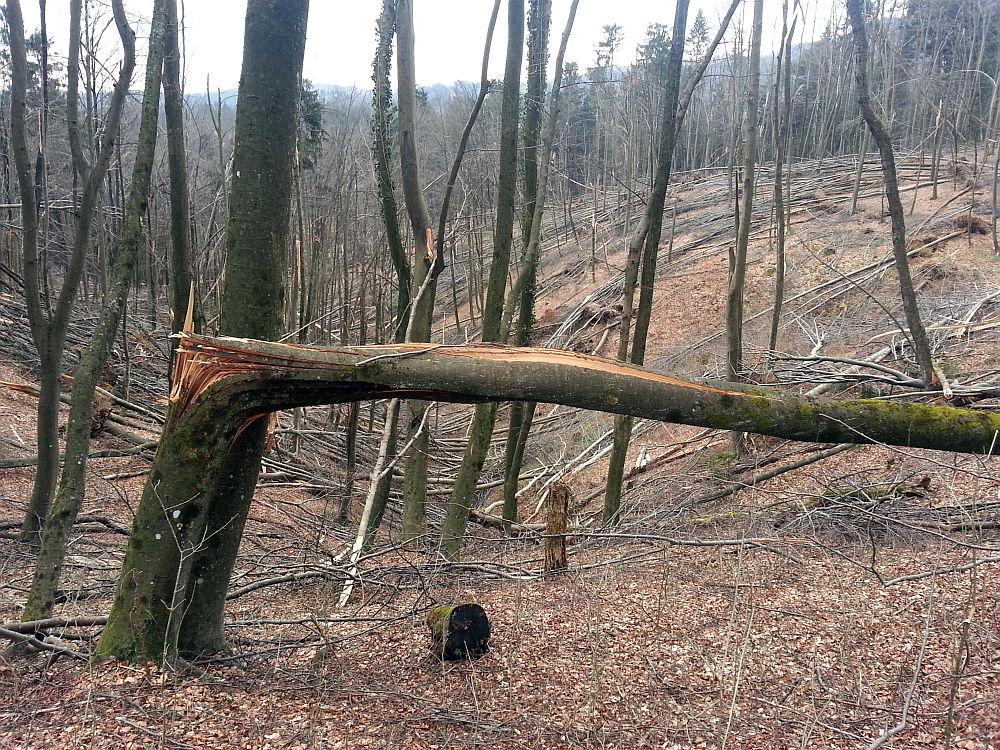
In some areas, like for example in the Koroška region, almost all the damaged trees have been removed. In other areas, like for example around Tolmin, only a fifth of the damaged trees have been cut. Working on the steep, hardly accessible slopes above Tolmin is very dear and demanding. In addition, there is very few trained staff for this kind of work. "The fact that last year in Postojna there were 30 heavy cutting machines working at the same time, while in our area there was only one, says a lot. Everything has to be removed with cables and tractors," says the district forester Edo Kozorog.
One fourth of the wood to remain in the forest. The threat of the bark beetle.
Tolmin officials estimate that nearly three fourths of the wood mass in state-owned forests will be restored by the end of 2016, while in private forests only a half. After three years, when according to the Forest Service the restoration of Slovenia's forests will be finished, in some forests one fourth of the damaged trees will still be there.
"Among the fallen trees, which are still in the forests, there is still some quality wood," says Idrija district forester, Erazem Poženel. "Whole trees have fallen, especially in places where the earth was heavily soaked. But they can still be sold as they have preserved their quality." However, that needs to be done as soon as possible. The wood is losing its value and conifers are being attacked by bark beetles.


































































